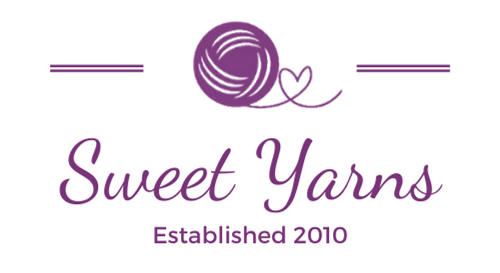
We had a great chat last night on our Virtual Knit Night about making adjustments to a top down sweater like the Grouse Creek one we're doing right now. It's one of the reasons I really like doing top down sweaters - you can try them on and make adjustments so they fit you the way you want.
I find a lot of designers do skinnier arms than what fits me so I'm always trying on and adjusting where I do my sleeve decreases. You definitely want the sleeve to still look nice but also fit, and leaving out all the decreases just won't look right. You'll want to follow the designers method of decreasing but you may want to change where the decreases start and how many rows in between.
So I promised I would write out a blog post. Hopefully what I was talking about will be a little clearer. It can be a little confusing when I just talk about things on the fly so written words should be a little better. ;)
Tip: When you want to try on your sweater and your cord isn't long enough, grab a long needle that is a smaller size than the one you are working with. Start slipping your stitch purlwise from the left needle onto the smaller one until you can comfortably spread out the stitches without the fear of loosing any. I suggest being able to have the needle tips hanging down with stitches only on cords. After you've tried on the sweater and are ready to start knitting again, you can knit the stitches right off the spare needle onto your original one again.
Taking measurements to change sleeve circumference
With stitches spread out to gauge, measure the circumference of the sleeve stitches so you know what you are starting with. Then you want to meaure your arm where that part of the sleeve lands to see the difference you are working with (ie. the positive ease). For this example, we're going to say that the circumference is 12".
Tip: If the ease is too wide, then you can start decreasing earlier so that you get to the ease you want sooner. Make sure you spread the decreases out evenly through the rounds and you don't decrease too much where your arm is still a larger circumference.
If you are happy with the ease, then you'll want to figure out where your adjustments need to start. For this example we're going to say that the decreases need to start just past my elbow. (My upper arm is pretty much all the same circumference.)
The second place you want to measure is the smallest circumference you want, down at your wrist.
Tip: When doing both of these measurements, you'll want to include the positive ease, so not tight on your arm but a little loose. For example, my wrist is approximately 6 3/4" but I'm adding ease to get it to 8". Just below my elbow is about 10" but I'm adding ease to get the circumference to 12".
So you take your larger measurement, subtract your smaller measurement and that number is how many inches you need to remove. You'll compare this number to stitch gauge.
So with the example numbers:
12" minus 8" equals 4" that need to be removed. Comparing that to the stitch gauge, it would be 24 stitches. On each decrease round, you are getting rid of 2 stitches, therefore I need 12 decrease rounds from elbow to wrist.
There's one more measurement you need - the distance between your first measurements. For this example, my decrease are is 8" from the elbow measurement to the wrist measurement. This means I need to fit 12 decrease rounds evenly in the 8" length.
So how does the rounds pattern work out to? We need to look at round gauge. According to the pattern, there are 32 rounds in 4", so we have 64 rounds to work with. (You can also check your own round gauge and adjust the numbers.) Now we take the number of rounds and divide it by the number of decreases and find out our decrease pattern.
So with the example numbers:
64 rounds divided by 12 decrease rounds gives us 5.3 rounds. This translates into one decrease round followed by 4 plain knit rounds. You will repeat this pattern until all the decreases have been worked along the forearm.
And now your sweater will fit! :)
I know this was a long and wordy one. Hopefully my explanations all make sense. If you need some help figuring this out, feel free to send me a message or stop by the store.
